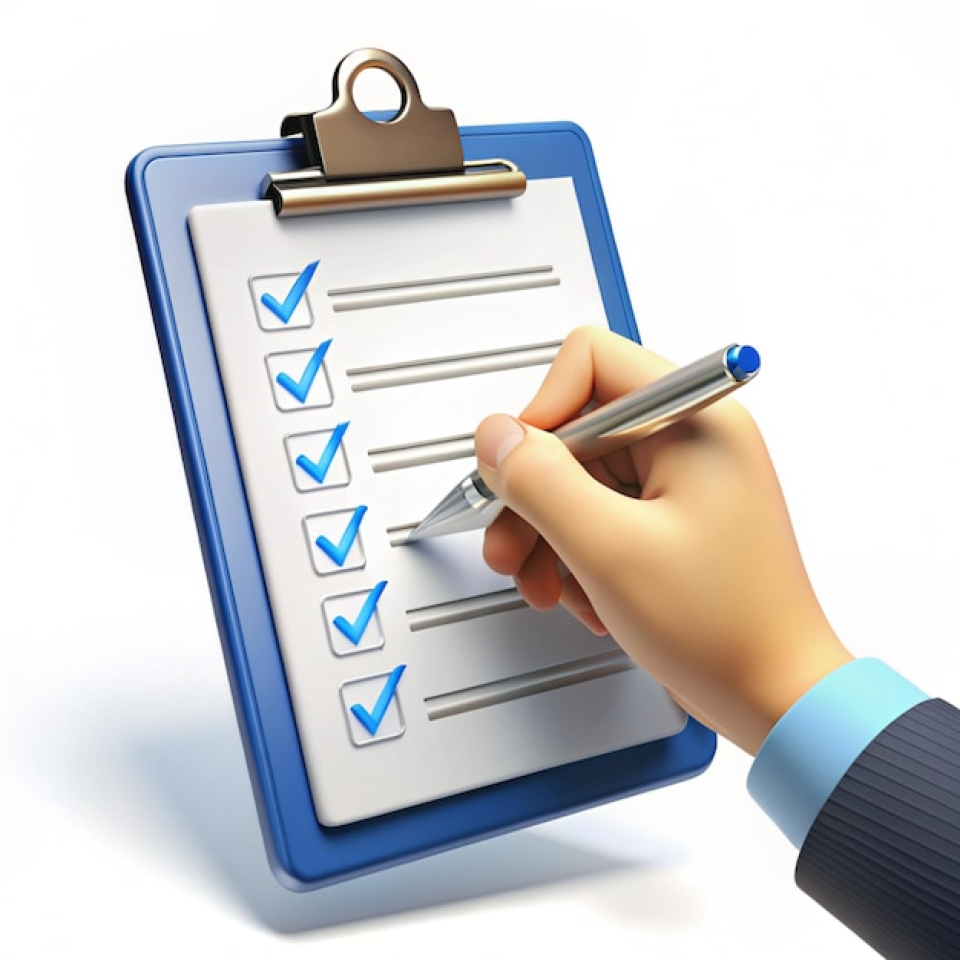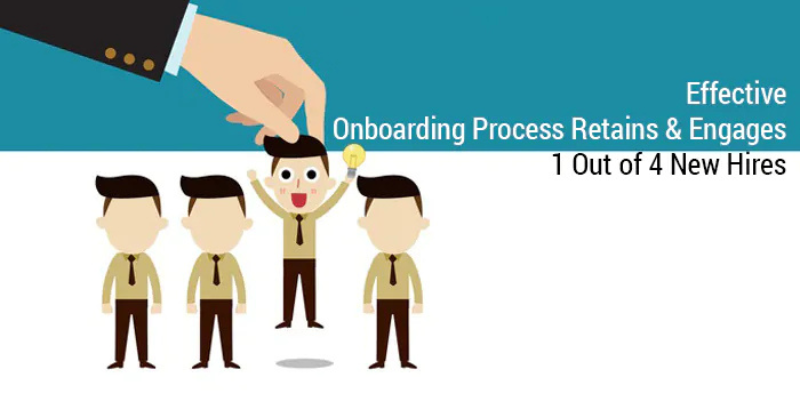Welcoming a new employee is more than a quick office tour and completing a set of formalities. If it is not done properly, the new hires could feel disconnected and struggle to align with the company values. Therefore, a detailed employee onboarding checklist helps them integrate seamlessly into the company and significantly enhances their overall experience.
Investing time and effort in training and educating new employees about their role & work culture is highly valuable. A well-planned onboarding process leads to high engagement, low employee turnover, and a high retention rate. Since there’s always a fine line between making a good impression and a lasting impression, a perfectly designed employee onboarding checklist is what every HR person needs.
Here’s a handy HR onboarding checklist to implement a step-wise procedure to make new hires familiar with the organization and its culture. So, let’s get started.
Table of Contents
5 Stages of Employee Onboarding
A simple and effective onboarding checklist for HR professionals
1️⃣ Pre-Onboarding
2️⃣ First Day (Orientation)
3️⃣ The First Week
4️⃣ Initial Months
5️⃣ The end of the First Year

Pre-Onboarding
This process starts even before the employee begins coming to the office. In fact, this is the first communication between the company and the new employee. It subsequently ensures that the new hires have a smooth integration with the company.
When an employee is welcomed at their new workplace with a structured orientation schedule and a well-organized workstation, it leaves a strong first impression.
Moreover, this level of preparedness reflects the employer’s commitment to a smooth onboarding experience and conveys a sense of enthusiasm in welcoming the new hire. Ultimately, this inspires employees to embrace their work responsibilities with confidence from day one.
Pre Onboarding Checklist:
The new employee onboarding checklist, combined with a well-structured onboarding plan, ensures a seamless start for your new hires:
- » Greet new employees by sending a personalized welcome email. The mail should carry details about the first day (dress code, arrival time, etc.)
- » Prepare all forms and documents that need to be filled out by the new employee, such as the benefits enrollment form and NDA.
- » Share a company-wide announcement email about their role and joining date.
- » Arrange and set up their workspace, including their desk, chair, and other additional equipment they may require.
- » Issue their ID cards and access badges to ensure they are ready for smooth access to the premises.
- » Assemble a welcome kit including an employee handbook.
- » Pair the new hire with an experienced employee to support and coach them.
- » Provide them with uniforms or t-shirts of the appropriate sizes.
- » Arrange timely access to email, systems, tools, and internal resources.
Joining Day
On the joining day, it is necessary to make your employees feel comfortable in the new work environment. To begin with, make them familiar with company policies and give them some time to socialize among coworkers. In addition, plan to keep a small part of the first day for formal meetings with their immediate supervisors, managers from different teams, peers, and whosoever is related to the work role. After all, the first few days speak a lot about your company culture, and thus employees should feel satisfied that they have made the right decision.
First Day Checklist
Make a lasting impression on new hires with a thoughtfully crafted first day experience. Use this checklist on their first day of joining.
- » Greet them cordially upon their arrival.
- » Give them a guided office tour of key areas, such as meeting rooms, the cafeteria, and their designated work station.
- » Introduce them to their supervisor, team members, and assigned mentor.
- » Make sure all HR formalities, including essential onboarding documents, are duly signed and submitted.
- » Schedule a one-on-one meeting with the employee and their direct supervisor.
- » Inform them about your company culture and values.
- » Furthermore, host a team welcome by arranging an informal meet-and-greet, coffee break, or team lunch.
- » Finally, check that all employee login access and credentials are working properly.

The First Week
The initial days are not only meant to welcome the employee, but it is also the right time to shift an employee’s focus to their job responsibilities. To ease this transition, introduce the employee to the ongoing projects that the team is handling, and gradually involve them in the work. Furthermore, discuss the key result areas (KRAs) to encourage them to do better and excel in their new job role.
First Week Checklist
Employees get overloaded with information in the first week of their joining. Therefore, it is important to help them navigate with confidence by having a well-planned onboarding strategy.
- » Schedule a casual coffee or team lunch to help them build early connections with colleagues.
- » Ensure that the new hire has completed key documentation, including payroll, benefits, and HR forms.
- » Verify access to all systems, software, and equipment.
- » Introduce them to cross-functional teams they’ll collaborate with frequently.
- » Clarify initial job expectations and also discuss short-term goals.
- » Review upcoming relevant projects, timelines, and key deadlines pertaining to the employee.
- » Host an end-of-week check-in to address questions and additionally gather feedback on their onboarding experience.
- » Add them to team calendars, one-on-one meetings, and events.
- » Monitor progress on their training schedule to keep momentum going.
- » Walk them through the employee handbook and key company policies.
Initial Months
Whenever the employee is all set to confidently take up the workload and contribute to the team projects, ensure they have the necessary support. Help them further establish a flexible work routine to maximize productivity.
Depending upon the employee’s job role and probation period, allocate time to review the performance and share feedback. Last but not the least, maintain a track of keeping follow-ups at regular intervals. It gives a sense of confidence to the employees and also sends out a message that their day-to-day work performance is measured and valued.
First Month Checklist
Ensure your new hire continues to feel welcomed, supported, and aligned with their role.
- » Send them an onboarding feedback survey to understand their experience so far.
- » Invite them to give a brief presentation about themselves during a team meeting.
- » Schedule a progress check meeting between the employee and their supervisor to track development.
- » Set a personal check-in to discuss their well-being and address any questions.
- » Verify that all job and role-specific training sessions are complete.
- » Ensure compliance, ethics, and company policy trainings have been successfully completed.
- » Double-check that they’ve acknowledged the employee handbook and related documentation.
- » Futhermore, plan any additional learning sessions based on current needs or performance feedback.
The overall purpose of conducting an effective onboarding is to engage employees in the first place and also to tell them that they are valued. Hence, make it a point to take employee feedback periodically to know their experience and job satisfaction levels at every stage. This will subsequently help you improve onboarding best practices and engage and retain the best talent.

At the End of the First Year
While a new employee checklist usually covers the first 90 days, it’s equally important to offer continued support and monitoring throughout the first year. This approach helps keep the new hires engaged, aligned with their goals, and fully integrated into the organization. This should involve:
- » Conducting a one-year check-in with the employee to reflect on their first year, address any concerns, and ensure they feel supported in their role.
- » Reviewing the employee’s performance against long-term goals and key responsibilities established during onboarding.
- » Discuss career development plans with the employee. Ask them about their goals and skilled building interests.
- » Sharing an anonymous feedback form with your employee to gather insights on the onboarding experience and areas for improvement.
- » Analyzing feedback to identify trends, address potential gaps, and evolve the onboarding program to enhance employee satisfaction and retention.
To ensure a seamless onboarding experience, it’s helpful to break down the entire journey into structured, manageable checklists. Moreover, since each new hire comes with unique responsibilities and role-specific needs, it’s important to tailor the onboarding process for new hires accordingly.
Feel free to follow this employee onboarding checklist and make your onboarding successful with a high retention rate & a happier workforce!
Onboarding Remote Employees
Since the advent of COVID-19, the world has shifted to remote work more than ever before. With this transition, face-to-face meetings are no longer a necessity. Many companies have even extended this approach to virtual hiring and onboarding process.
Here is a remote onboarding process that should be followed:
- » Send the new hires a personal welcome email, employee handbook, and employee onboarding forms to sign electronically.
- » Discuss company related rules and policies.
- » Share a checklist of what work to expect in the first week.
- » If your remote worker needs any tools and equipment, such as a laptop, tab, or software, inform your IT team to provide it.
- » Set up their accounts for office emails, chats, and all communication channels. Invite them to all relevant department and company meetings online.
- » Familiarize team members with their new hires’ work roles and the day they will begin their work.
- » Organize a conference meeting to interact with each team member and learn about their roles.
- » Give them online workshops, webinars, and instructional videos if training is required in their role.
Empxtrack stays aligned with the latest hiring trends and workplace dynamics. Its onboarding software helps streamline the entire process by eliminating manual processes and saving time in onboarding formalities.
Free Employee Onboarding Template for New Hires
Our free, editable excel employee onboarding template gives you the flexibility to customize the employee onboarding process to your company’s needs. You can easily add employee details and manage onboarding with full control and ease. Get started with your free template today.
Final Thoughts
Onboarding doesn’t only mean a warm welcome; its meaning extends beyond this. It is the first step in building loyalty, engagement, and retention among employees. In present times, where talent turnover is costly and employee experience defines employer branding, an effective onboarding checklist becomes crucial. It’s not only about ticking boxes, but also about making the employee feel seen, supported, and valued.
You can create a seamless experience for the new hires by breaking down the onboarding journey into structured stages, from pre-onboarding to the end of the year. A well-structured employee onboarding checklist can significantly support this. An employee is more likely to thrive and perform better if they feel connected from day one.
Frequently Asked Questions
Q1. | What is an employee onboarding checklist? |
| Ans. | An employee onboarding checklist outlines all the important tasks that need to be completed to help a new employee integrate smoothly into their role. The checklist not only guides them during the initial days or weeks but also prepares them to remain compliant with company policies and legal requirements. |
Q2. | Why is an onboarding checklist important? |
| Ans. | It is important to create a smooth onboarding experience that guides the new hires to know everything about their role. It also helps them become familiar with the company’s policies, cultures, and values. For these reasons, employee onboarding for new employees is important. |
Q3. | What should be included in a new hire onboarding checklist? |
| Ans. | An onboarding checklist for new hires should include essential tasks such as: ● Completing HR paperwork ● Setting up the employee’s equipment and system access ● Introducing the new hire to their team and company culture ● Providing job-specific training ● Scheduling regular check-ins to ensure a smooth transition into the role |
Q4. | How long should an employee onboarding process last? |
| Ans. | According to most HR experts, the employee onboarding process should last for around six months. This is also the time when probation ends. However, it can also be extended to a year to ensure long-term success and retention of the employee. |
Q5. | What’s the difference between onboarding and orientation? |
| Ans. | The main difference between the two is that employee orientation is a short-term event, while onboarding is a longer process that can even take a year. |
Q6. | Can I use a template for onboarding? |
| Ans. | Yes, you can use a new hire checklist template for onboarding. It is even recommended if you want to ensure consistency, save time, and reduce the risk of missing important steps during the onboarding process. Empxtrack provides an employee onboarding checklist template to streamline the entire process. |
Q7. | Does onboarding impact employee retention? |
| Ans. | Yes, onboarding can significantly impact and improve employee retention. A well-structured onboarding process helps new hires feel welcomed, supported, and confident in their roles. This boosts engagement, reduces early turnover, and increases long-term employee loyalty. |




Excellent post! The Empxtrack employee onboarding checklist provides a clear, well-structured roadmap—from pre‑boarding to year‑end follow‑ups—that ensures new hires feel welcome, engaged, and productive from day one. Well done on delivering such a thoughtful resource!
Thank you. We’re glad you found the content useful.